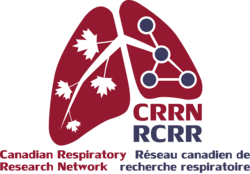 2015 CRRN ERLI Recipient
2015 CRRN ERLI Recipient
http://cpep.rehab.med.ubc.ca/our-people/
Mechanisms of dyspnea and exercise intolerance in patients with chronic respiratory diseases
The purpose of this research program is to study the causes of breathlessness and exercise intolerance in patients with chronic respiratory conditions including chronic obstructive pulmonary disease, interstitial lung disease, asthma, and cystic fibrosis. Patients rate the intensity of their breathing discomfort during an intense exercise challenge while we simultaneously measure how their lungs, heart, and muscles are functioning. We then test various therapeutic interventions to see if we can reduce their breathlessness and enhance their exercise capacity. The ultimate goal of this research program is to enable patients to engage in regular physical activity by reducing their symptoms so that we can enhance their health and quality of life.
Why is the research project/program important?
Chronic respiratory diseases are a leading cause of death and disability in Canada and around the world. Patients with respiratory diseases commonly experience shortness of breath, which makes it difficult to perform simple activities of daily living such as walking up a flight of stairs. Shortness of breath is a distressing sensation that can provoke feelings of panic and anxiety. To avoid this uncomfortable sensation, patients minimize their physical activity which makes them weaker and even more short of breath. This pattern of breathlessness and activity avoidance spirals out of control to the point where the patient become so short of breath that they lose their independence. In order to prevent this downward spiral, caregivers need more effective strategies to help these patients manage their breathlessness and remain physically active. This research program will identify the precise causes of this complex sensation in patients with different respiratory diseases and will evaluate different treatment strategies to reduce breathlessness.
What was the result of the project and what impact will it have?
Since receiving the Emerging Research Leaders Initiative award, our research team has provided new insight into the causes of breathlessness and exercise intolerance in several populations including, but not limited to, asthma, COPD, smokers at risk for developing COPD, interstitial lung disease, and asthma (see publications below). Our most important study to date found that high levels of oxygen supplementation during an acute bout of exercise can dramatically reduce breathlessness and improve exercise endurance in patients with pulmonary fibrosis. The manuscript is currently in preparation and the results were instrumental in us receiving a major grant ($2.1M) to examine the effects of oxygen supplementation during an 8 week exercise training intervention in patients with idiopathic pulmonary fibrosis (IPF) across 8 centres in Canada, known as the HOPE-IPF study (see reference below denoted by *).
Publications
Lavin KM, Guenette JA, Smoliga JM and Zavorsky GS. Is controlled-frequency breath swimming a surrogate for respiratory muscle training? Scandinavian Journal of Medicine and Science in Sport. 25: 16-24, 2015.
Layton AM, Armstrong HF, Moran SL, Guenette JA, Thomashow BM, Jellen PA, Bartels MN, Sheel AW and Basner RC. Quantification of improvements in static and dynamic ventilatory measures following lung volume reduction surgery for severe COPD. Journal of the COPD Foundation. 2: 61-69, 2015.
Elbehairy AF, Raghavan N, Cheng S Yang L, Webb KA, Neder JA, Guenette JA, Mahmoud MI and O’Donnell DE; on behalf of the Canadian Respiratory Research Network. Physiological characterization of the chronic bronchitis phenotype in GOLD grade 1B COPD. Chest. 147: 1235-1245, 2015.
Quon BS, Schaeffer MR, Molgat-Seon Y, Wilkie SS, Wilcox PG and Guenette JA. Physiological mechanisms of dyspnea relief following Ivacaftor in cystic fibrosis: a case report. Respiratory Physiology and Neurobiology. 205: 105-108, 2015.
Faisal A, Webb KA, Guenette JA, Jensen D, Neder JA, O’Donnell DE; on behalf of the Canadian Respiratory Research Network. Effect of age-related ventilatory inefficiency on respiratory sensation during exercise. Respiratory Physiology and Neurobiology. 205: 129-139, 2015.
Cortés-Télles A, Torre-Bouscoulet L, Mejía-Alfaro R, Silva-Cerón M, Wilkie SS and Guenette JA. Cardiorespiratory and sensory responses to cycle exercise in sedentary patients with well controlled asthma. Journal of Asthma. 52: 576-582, 2015.
Elbehairy AF, Ciavaglia CE, Webb KA, Guenette JA, Jensen D, Mourad SM, Neder JA and O’Donnell DE; on behalf of the Canadian Respiratory Research Network. Pulmonary gas exchange abnormalities in mild COPD: Implications for dyspnea and exercise intolerance. American Journal of Respiratory and Critical Care Medicine. 191: 1384-1494, 2015.
Dominelli PB, Foster GE, Guenette JA, Wilkie SS, Haverkamp HC, Eves ND, Dominelli GS, Henderson WR, O’Donnell DE and Sheel AW. Quantifying the shape of the maximal expiratory flow-volume curve in mild COPD. Respiratory Physiology and Neurobiology. 219: 30-35, 2015.
Cory J, Schaeffer MR, Wilkie SW, Ramsook AH, Puyat J, Arbour B, Basran R, Lam M, Les C, MacDonald B, Jensen D and Guenette JA. Sex differences in the intensity and qualitative dimensions of exertional dyspnea in physically active young adults. Journal of Applied Physiology. 119:998-1006, 2015.
Lesser IA, Dick T, Guenette JA, Hoogbruin A, Mackey DC, Singer J and Lear SA. The association between cardiorespiratory fitness and abdominal adiposity in postmenopausal, physically inactive South Asian women. Preventative Medicine Reports. 2: 783-787, 2015.
Cortés-Télles A, Torre-Bouscoulet L, Silva-Cerón M, Mejía-Alfaro R, Syed N, Zavorsky GS and Guenette JA. Combined effects of mild-to-moderate obesity and asthma on physiological and sensory responses to exercise. Respiratory Medicine. 109: 1397-1403, 2015.
Quon BS, Wilkie SW, Molgat-Seon Y, Schaeffer MR, Ramsook AH, Wilcox PG and Guenette JA. Cardiorespiratory and sensory responses to exercise in adults with mild cystic fibrosis. Journal of Applied Physiology. 119: 1289-1286, 2015.
Sales A, Fregonezi A, Ramsook AH, Guenette JA, Lima I and Reid WD. Respiratory muscle endurance after respiratory muscle training in athletes and non-athletes: a systematic review and meta-analysis. Physical Therapy in Sport. 17: 76-89, 2016.
Ramsook AH, Koo R, Molgat-Seon Y, Dominelli PB, Syed N, Ryerson CJ, Sheel AW and Guenette JA. Diaphragm recruitment increases during a bout of targeted inspiratory muscle training. Medicine and Science in Sports and Exercise. 48: 1179-1186, 2016.
Basoudan N, Reid WD, Shadgan B, Guenette JA and Road J. Effects of acute hypoxia on inspiratory muscle oxygenation during incremental inspiratory loading in healthy adults. European Journal of Applied Physiology. 116: 783-787, 2016.
Quon BS, Wilkie SS, Ramsook AH, Schaeffer MR, Puyat JH, Wilcox PG and Guenette JA. Qualtiative dimensions of exertional dyspnea in adults with cystic fibrosis. Journal of Applied Physiology. 121: 449-456, 2016.
In Press
Lesser IA, Guenette JA, Hoogbruin A, Mackey DC, Singer J, Gasevic D and Lear SA. Association between exercise-induced change in body composition and change in cardio-metabolic risk factors in post-menopausal South Asian women. Applied Physiology Nutrition and Metabolism. In Press.
*Ryerson CJ, Camp PG, Eves ND, Schaeffer M, Syed N, Dhillon S, Jensen D, Maltais F, O’Donnell DE, Raghavan N, Roman M, Stickland MK, Assayag D, Bourbeau J, Dion G, Fell CD, Hambly N, Johannson K, Kalluri M, Kolb M, Manganas H, Moran-Mendoza O, Provencher S, Ramesh W, Rolf D, Wilcox PG and Guenette JA. High Oxygen delivery to Preserve Exercise capacity in IPF patients treated with nintedanib: Methodology of The HOPE-IPF Study. Annals of the American Thoracic Society. In Press.
Elbehairy AF, Guenette JA, Ciavaglia CE, Webb KA, Faisal A, Ramsook AH, Neder JA and O’Donnell DE; on behalf of the Canadian Respiratory Research Network. Mechanisms of exertional dyspnea in symptomatic smokers without COPD. European Respiratory Journal. In Press.
